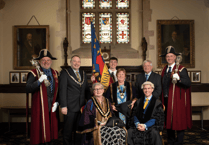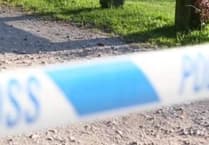A TEAM of metal detectorists struck gold, or very close to it, when they discovered a hoard of silver coins dating back to between 1282AD and 1434AD.
Their medieval find back at the end of 2023 has just come to light after having to be kept secret due to the Treasure Act 1996. The group who uncovered the haul of coins can now speak about their discovery.

The five members of the Teignbridge History Finders — Paul May, Neil King, Pete Young, Clive Hammett, and Jim Luxton — were responsible for uncovering the treasure about a mile away from Okehampton Castle at the end of last year.
They worked over the course of two visits to the site on the edge of Dartmoor to discover the hoard of 21 silver groats and pennies which were scattered across an area of around three metres. All were found with equipment at a depth of about six inches below the surface.
.jpeg?width=752&height=500&crop=752:500)
The landowner of the field, who wishes to remain anonymous, cooperated with the group in reporting the discovery, which is required by law due to the coins’ age and composition. Under the Treasure Act 1996, the hoard is classed as treasure and needs to be reported to the local coroner.
The Okey hoard, as it’s been affectionately named by the group of five, is considered a significant find. It is the first big find for the group, who have only been set up about a year and were on their third and fourth hunt.

Jim Luxton, who leads the group, said: “It’s a good find for all involved. Although greater hoards are being found every day, it’s still very exciting; you don’t find one every day!”
They coins are currently in storage in Somerset being held by the Devon Finds liaison officer. The assessment of them has dated them as between 1282AD and 1434AD, spanning the reigns of Edward I, Edward III and Henry VI. A further unidentified Roman coin was discovered at the same time.

Jim added: “We have been in regular contact with the finds liaison officer and updated on what is happening with the coins.
“They have been through the treasure process with the coroner and now they are being offered to museums. It’s highly unlikely anybody will buy them; they would normally then go back to the finders.
“We’re nowhere near that yet,” he added. “It can take two to three years to be sorted out.”
Editor of Treasure Hunting magazine, Julian Evan-Hart said: “This is an illustration of just how beneficial metal detecting is and how it can contribute to our history and culture and provide evidence for us all to share and marvel at."





Comments
This article has no comments yet. Be the first to leave a comment.